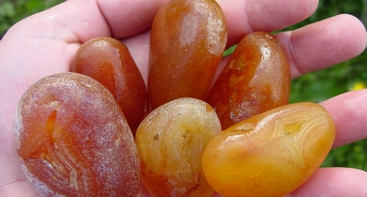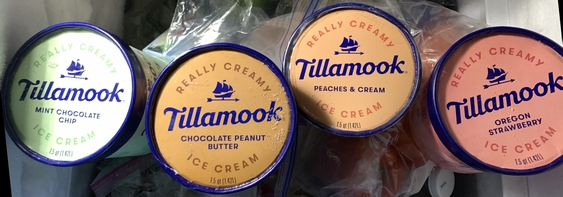Sabre52
Cave Dweller  Me and my gal, Rosie
Me and my gal, Rosie
Member since August 2005
Posts: 20,476
|
Post by Sabre52 on May 11, 2022 18:05:19 GMT -5
Interesting discussion. I've always been confused how in south Texas near George West, where again the silica must come from marine fossils with silica skeletons, the wood is both colorful and very hard and silica replaced. Yet, here locally, though we rarely find a hunk, of agatized wood, most the wood is replaced by calcite. Yet the same silica bearing fossil layers are present, but I guess not correctly overlaying the buried wood. I've actually been to a ranch where the whole hillside was petrified longs, all calcite replaced and soft. Very frustrating. Not a gemmy, colorful, hunk to be found.
|
|
jamesp
Cave Dweller 
Member since October 2012
Posts: 36,471
|
Post by jamesp on May 12, 2022 8:12:12 GMT -5
Funny Jim, every time you go back there and show more photos, it's starting to look like it's hard to avoid finding the pet wood .
Love to see what a slab looks like when you get your saw going.
We left NY some where around 30 years ago, been here almost 20. I think the long winters drive lots of people out.
Cheap real estate & taxes got us here, & the water based recreation - not the culture or rocks- BUT you have me rethinking about the rocks  Trying to plan a trip up to Barbour county to scout- maybe in June ? We shall see - work and projects keep us too busy. Question - The material laying on the ground in the floodplain shows dozens(hundreds lol) of colors since there is no creek stain on it being stored in clean sand. You can't walk away from it lol. It's like being in a candy factory. But poorly silicified pieces are the norm, maybe 15% is solid with gemmy colors
Meaning it's not all completely petrified ??
Or are you saying it's colored, but not hard ??
Patty
Well y'all have been there a long time. That cold weather coupled with snow has to be a problem. Granted Florida gets hot but the AC is usually a short distance away. The winters are real nice there, add part of spring and fall. Lol, the culture can be interesting depending on where one is lol. I say moving there was a good move ! The east coast is covered up with snow birds and they seem to love being down here during the winters. Most of that wood is well silicified, maybe 15% is both glassy and gemmy colored. Just like a fine piece of agate. Some of it is pithy and like sandstone, or some is laminated silicified layers that delaminate(typical poorly silicified wood). Some is super dense and grainy and near unbreakable. Much of it has a dense grey/blue quartzite center or layers or pockets in it exactly like the native quartzite which is peculiar. It's well worth seeing, there is so much variety and some really nice material. A real geologist needs to give an analysis of it. It had to be displaced after being silicified, it is piled in pieces and broken into too many sizes depending mostly on elevation, small pieces to big chunks. I say displaced, it appears a sedimentary deposit and there is ZERO limestone in the area. There is also massive chunks of silicified plates and chunks of layered chert bedrock broken up and heavily mixed with the wood that is also attractive. The fact that it is mixed with the wood suggests wave action or some force moved it and the wood there in the silicified form. |
|
|
|
Post by liveoak on May 12, 2022 8:49:36 GMT -5
We've always said that it's a lot easier to do things year round in the south, although of course slower in the heat, then in the north with the snow & ice for so many months. It's not a bad place to live, lots of nice rivers, springs, lakes & even the ocean.
Mostly still some what rural, and affordable.
I think, I still need to digest your silicification (sp?) info, but as you say we need to get ourselves up and finding some to experiment with on our own. 
Patty
|
|
jamesp
Cave Dweller 
Member since October 2012
Posts: 36,471
|
Post by jamesp on May 12, 2022 8:59:32 GMT -5
Interesting discussion. I've always been confused how in south Texas near George West, where again the silica must come from marine fossils with silica skeletons, the wood is both colorful and very hard and silica replaced. Yet, here locally, though we rarely find a hunk, of agatized wood, most the wood is replaced by calcite. Yet the same silica bearing fossil layers are present, but I guess not correctly overlaying the buried wood. I've actually been to a ranch where the whole hillside was petrified longs, all calcite replaced and soft. Very frustrating. Not a gemmy, colorful, hunk to be found. I had the same question Mel. The Rio and George wood is beautifully silicified. The Rio area may be imported ash related silicification but the George West wood must be formed by silica skeletons as is other local Texas pet wood north of the Rio. Limestone bedrock exposures in south Texas were covered with monocultures of similarly silicified pet wood depending on which limestone exposure you were collecting on. A shame about the large crop of calcite replacements. Darwin Dillon moved to Beeville TX next to George West for good reason. The gravel roads there are loaded with fine palm and wood. In addition to this Alabama wood is massive plates of banded chert base rock(death plate ?) that vary from a few inches thick to two feet thick. Most of it is in the creek bottom but also mixed with the wood on higher ground. But when broken the face glitters as if compressed sand bonded by silica similar to Tallahatta quartzite. But the bottom of the wood and chert rich creek is underlaid by crystalline quartz bedrock and no limestone. Here is a 4 inch thick hammer broken sample of this chert bed plate wetted. It can be quite attractive and takes a fine tumble polish.: 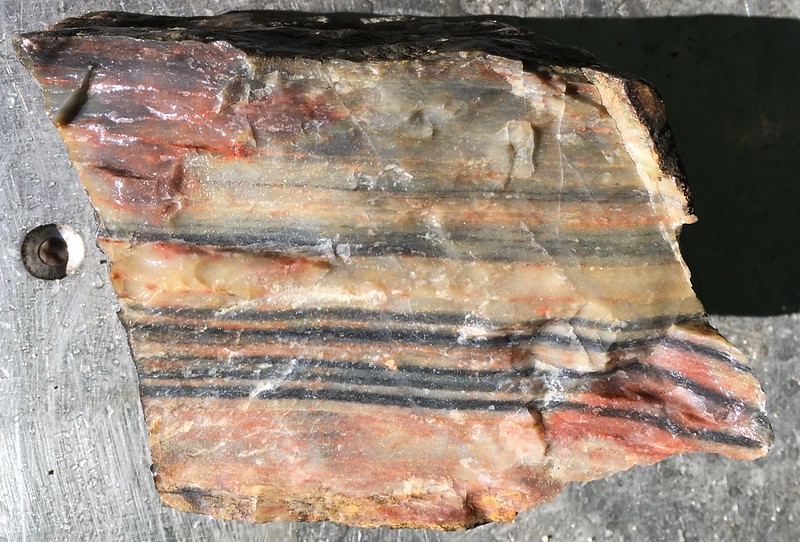 But this hammer broken face glitters as if pure quartzite. This dry photo does not do the full coverage glitter justice. It is as if this is quartzite bonded together with dissolved silica like Tallahatta yet some of it is nicely translucent. Colors range in the iron spectrum including crazy dark purples.: 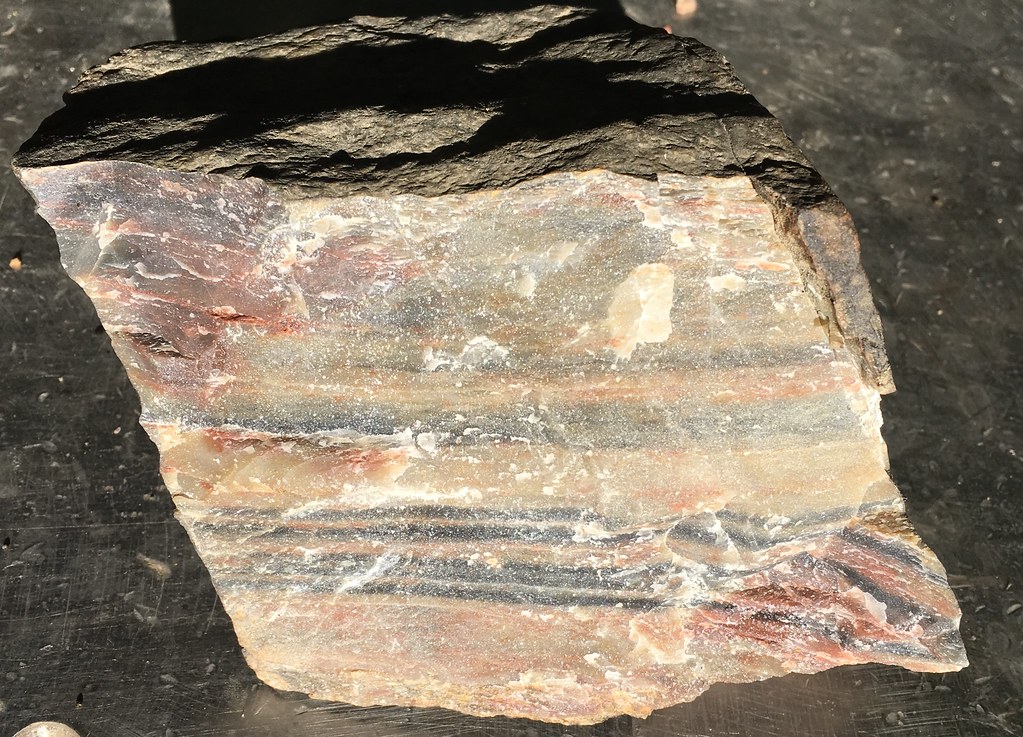 I sure wish you could go to this site. Your vast experience with silicified materials would sure be helpful. I was going to ask if I could send you an MFRB for your to analyze. I have a few tumble polished pieces to add to the samples if that helps. |
|
lparsons
Cave Dweller 
Member since April 2020
Posts: 276 
|
Post by lparsons on May 12, 2022 9:23:48 GMT -5
Trip yesterday was a success. However the drone needed some WiFi time to do updates so it did not fly. Next time. Ok, this is looking downstream on a big flat flood plain about 8 feet above a big creek. Normally these floodplains have 6 to 8 feet of rock free sediment and muck. Not this one, it is jam packed with petrified wood. A strange occurrence. This place is a riddle ! Looks like a tree fell across the creek and floodwater jumped the banks and polished the floodplain, note debris washed against the base of the trees. The wood gravel seems at least 5 feet deep, strange. 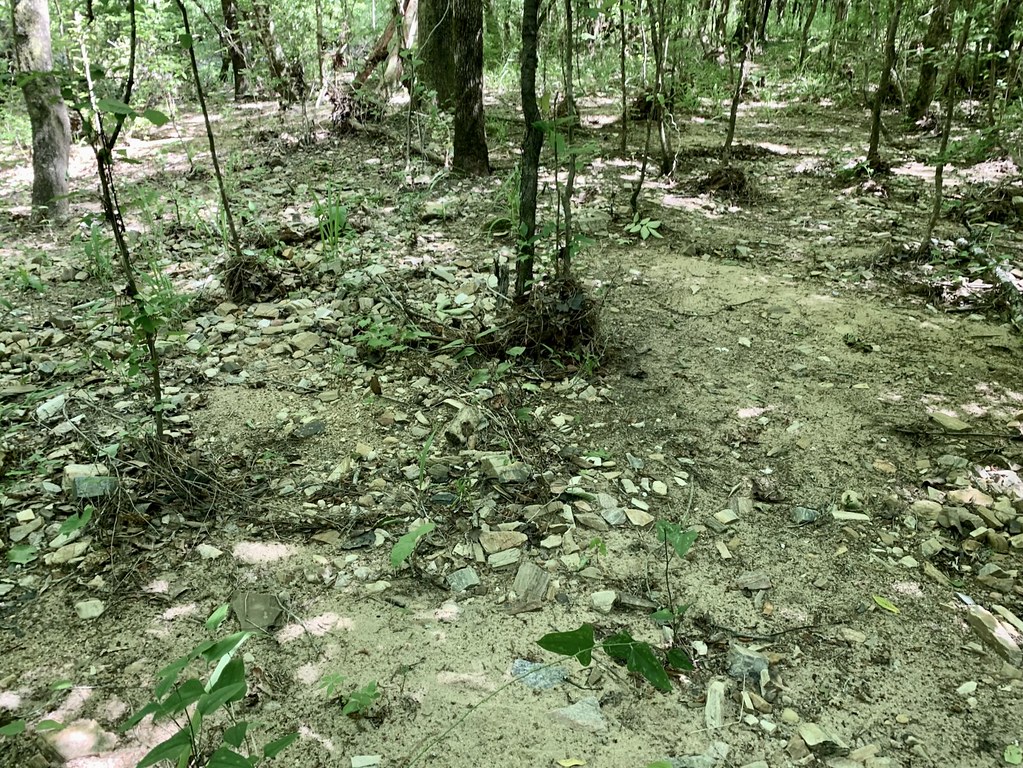 Found wood in another creek, this one much smaller. Creek was loaded with wood. It cut thru grey and red clay. It was loaded with (breeding ?) eels. Shrapnel hit me on the forehead, minor but bloody cut. 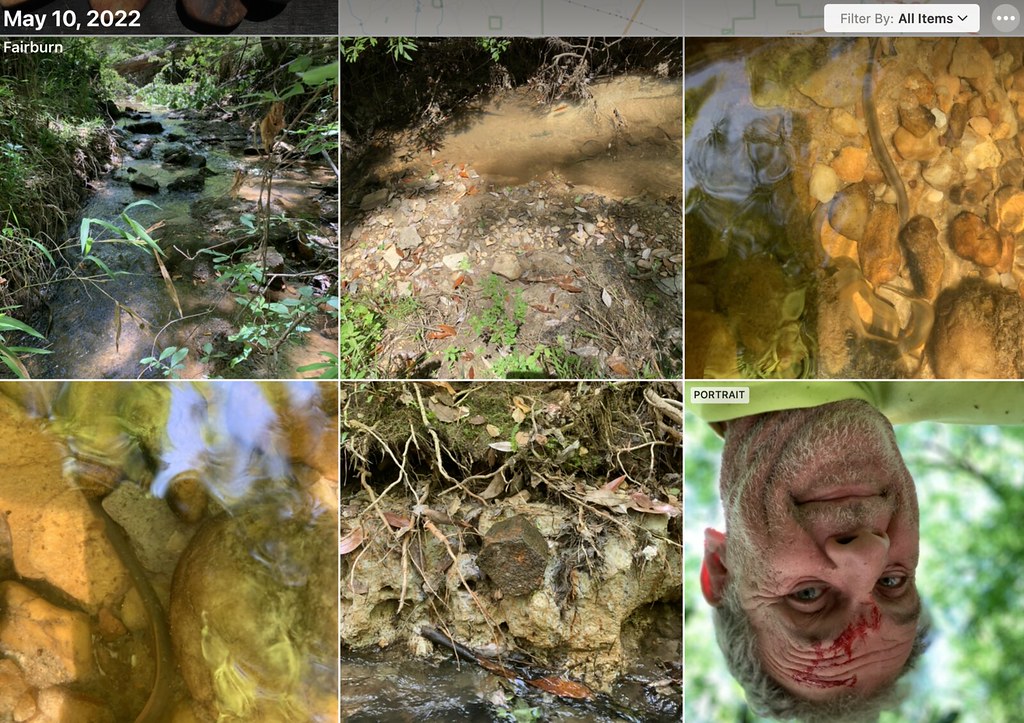 First photo is a large creek loaded with 5 to 100 pound hunks of wood. More washed over floodplain shots and some serious crayfish diggings. 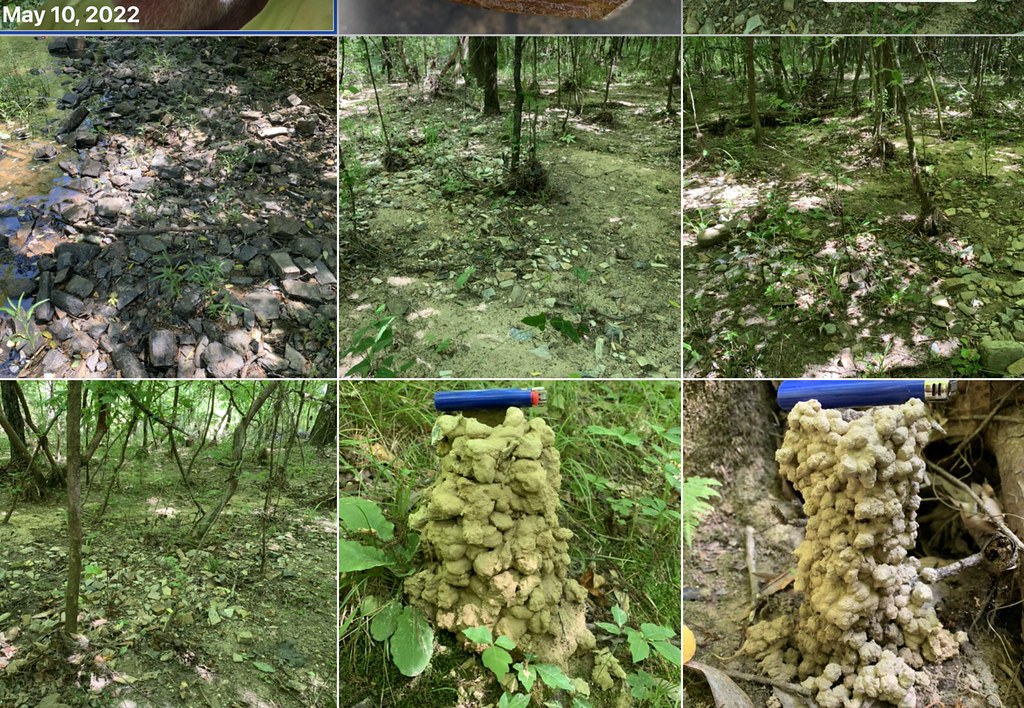 Still sampling. This stuff is impossible to read just looking at the patina, grrr. Getting better at it. Note the mookite lookalike from a 10 pound chunk. Should have sawed that one. In time... 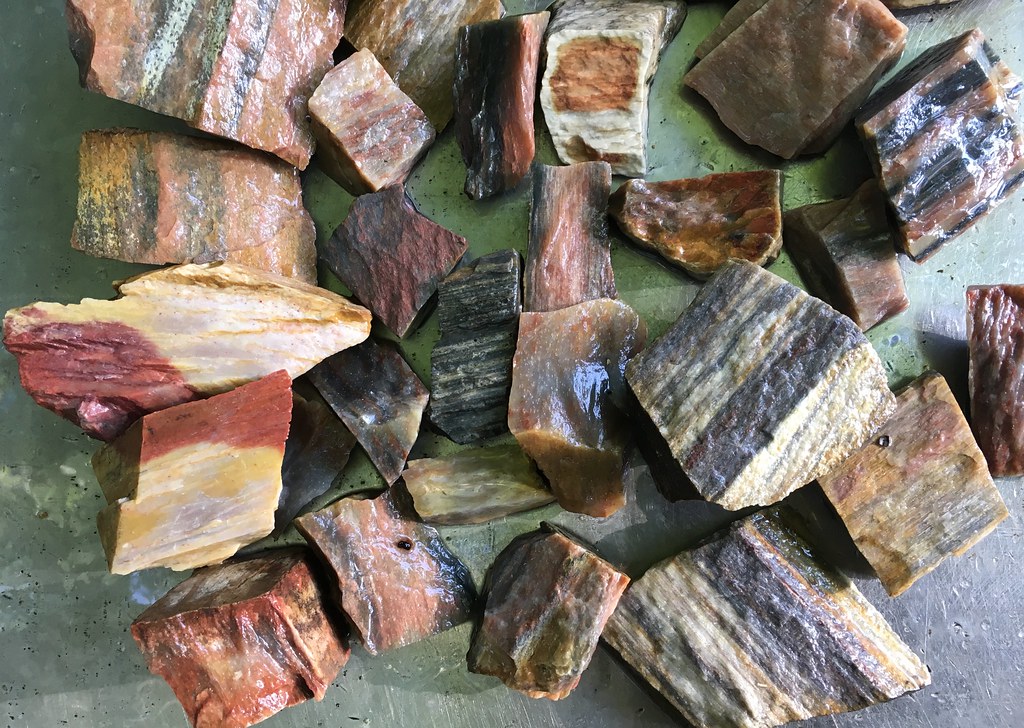 More fodder for the tumbler   … 🤣 quest for treasure…clues…maps…secret locations…mud bogs…EELS 😳 and shrapnel!?!? I’m starting to think of you as Indiana Jones🤣🤣🤣 |
|
jamesp
Cave Dweller 
Member since October 2012
Posts: 36,471
|
Post by jamesp on May 12, 2022 10:21:17 GMT -5
Lol, that's funny lparsons. I did make a living collecting wetland plant seeds, cuttings and seedlings for planting in my wetland mitigation plant business over a 30 year period in the SE US, South and Central America. Believe me, the habitats were beautiful but less than comforting. Most time spent in central Florida which was probably the most worrisome due to the heavy snake and bee nest populations. Not to mention introduced some introduced and obnoxious snake species Florida snake collectors let loose. Fossils are not often thought to be found in such locations but geologic exposures do exist in such places. Often the rocks and fossils are under shallow water in these locations and are well hidden. South Alabama is a walk in the park compared to those habitats. But forbidding enough to possibly keep rock hounds away ! |
|
|
|
Post by HankRocks on May 12, 2022 10:23:59 GMT -5
Interesting discussion. I've always been confused how in south Texas near George West, where again the silica must come from marine fossils with silica skeletons, the wood is both colorful and very hard and silica replaced. Yet, here locally, though we rarely find a hunk, of agatized wood, most the wood is replaced by calcite. Yet the same silica bearing fossil layers are present, but I guess not correctly overlaying the buried wood. I've actually been to a ranch where the whole hillside was petrified longs, all calcite replaced and soft. Very frustrating. Not a gemmy, colorful, hunk to be found. I had the same question Mel. The Rio and George wood is beautifully silicified. The Rio area may be imported ash related silicification but the George West wood must be formed by silica skeletons as is other local Texas pet wood north of the Rio. Limestone bedrock exposures in south Texas were covered with monocultures of similarly silicified pet wood depending on which limestone exposure you were collecting on. A shame about the large crop of calcite replacements. Darwin Dillon moved to Beeville TX next to George West for good reason. The gravel roads there are loaded with fine palm and wood. In addition to this Alabama wood is massive plates of banded chert base rock(death plate ?) that vary from a few inches thick to two feet thick. Most of it is in the creek bottom but also mixed with the wood on higher ground. But when broken the face glitters as if compressed sand bonded by silica similar to Tallahatta quartzite. But the bottom of the wood and chert rich creek is underlaid by crystalline quartz bedrock and no limestone. Here is a 4 inch thick hammer broken sample of this chert bed plate wetted. It can be quite attractive and takes a fine tumble polish.:  But this hammer broken face glitters as if pure quartzite. This dry photo does not do the full coverage glitter justice. It is as if this is quartzite bonded together with dissolved silica like Tallahatta yet some of it is nicely translucent. Colors range in the iron spectrum including crazy dark purples.:  I sure wish you could go to this site. Your vast experience with silicified materials would sure be helpful. I was going to ask if I could send you an MFRB for your to analyze. I have a few tumble polished pieces to add to the samples if that helps. All this petrified wood discussion while I am convalescing has gotten me thinking that I need to follow thru on a couple of search areas I have access to. In Texas "access" is everything, without it one is at considerable risk. Besides that searching during Summer months here is not the best idea., maybe in my 20's and 30's, not at 70!! Have never charted the wood in Texas but if you look at the geologic map, the formations run in arcs parallel to the coast and I have always thought that a particular wood found at one location in the arc, has a possibility of being elsewhere on the arc. Not so foolish to think it's that simple as so many additional factors enter into the picture. Then there's the whole river deposit activity that have gone back and forth over time moving stuff. A distant memory from over 50 years ago, one guy we new had collected some exceptional wood down near Moulton, the wood, although small pieces was exceptional. He told us where, but never checked it out. Of course his memory of where he was and my memory of his relating the info could be magnifying the error!! jamesp I would like to see the wood you are finding face polishes across the grain and with the grain. |
|
jamesp
Cave Dweller 
Member since October 2012
Posts: 36,471
|
Post by jamesp on May 12, 2022 11:01:41 GMT -5
The next post is a single piece I dissected from all different directions HankRocks. I'll get my saw going for those cuts you mentioned. I will say this stuff has a lot of personalities within one piece depending on the direction of the cut. And many other personalities from piece to piece in color and pattern. I stay overwhelmed by the broad variety. It seems you are located close to killer wood deposits, if not a short drive away. I hope you will pursue those sources when you heal up from your surgery. I was going to tip your doctor and have him add a turbo to your new heart valve so you will be half animal w/renewed energy  . Slept like a rock last night, man we ain't 30 any more ! |
|
jamesp
Cave Dweller 
Member since October 2012
Posts: 36,471
|
Post by jamesp on May 12, 2022 11:02:15 GMT -5
Looking at the complexity of one chunk of wood hammered off of a much bigger chunk sitting on the high and dry forest floor. It broke off easily with a hammer blow at one of the many old fracture lines, that being the darker face. It appears to have no fractures, a solid section. These thin cross grain wedge and flat cross grain segments are often rich in silica and color as if these chemicals made an easy entrance thru the vascular veins running with the wood grain. Judging from the patina covered fractures this appears to be the radial annual rings of the tree. Bark side at top, center of tree at bottom. 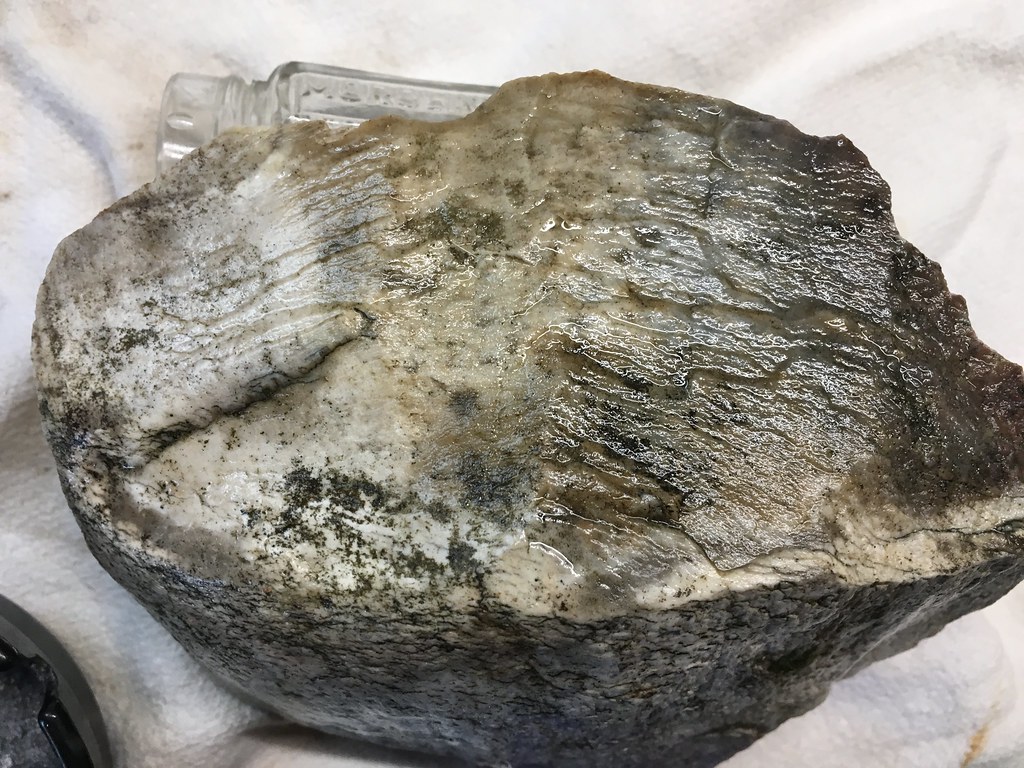 This view looking at the inside of the tree that was facing toward the sun in open air. Heavy patina. 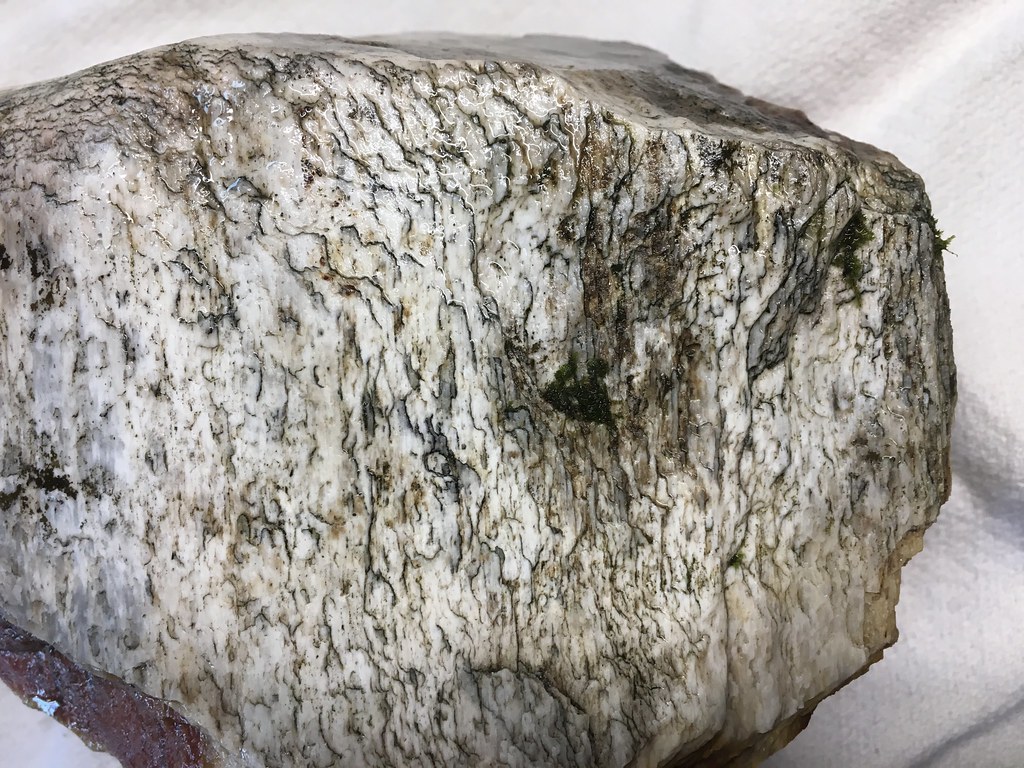 Looking at the bottom where is fractured away, all growth rings not visible. 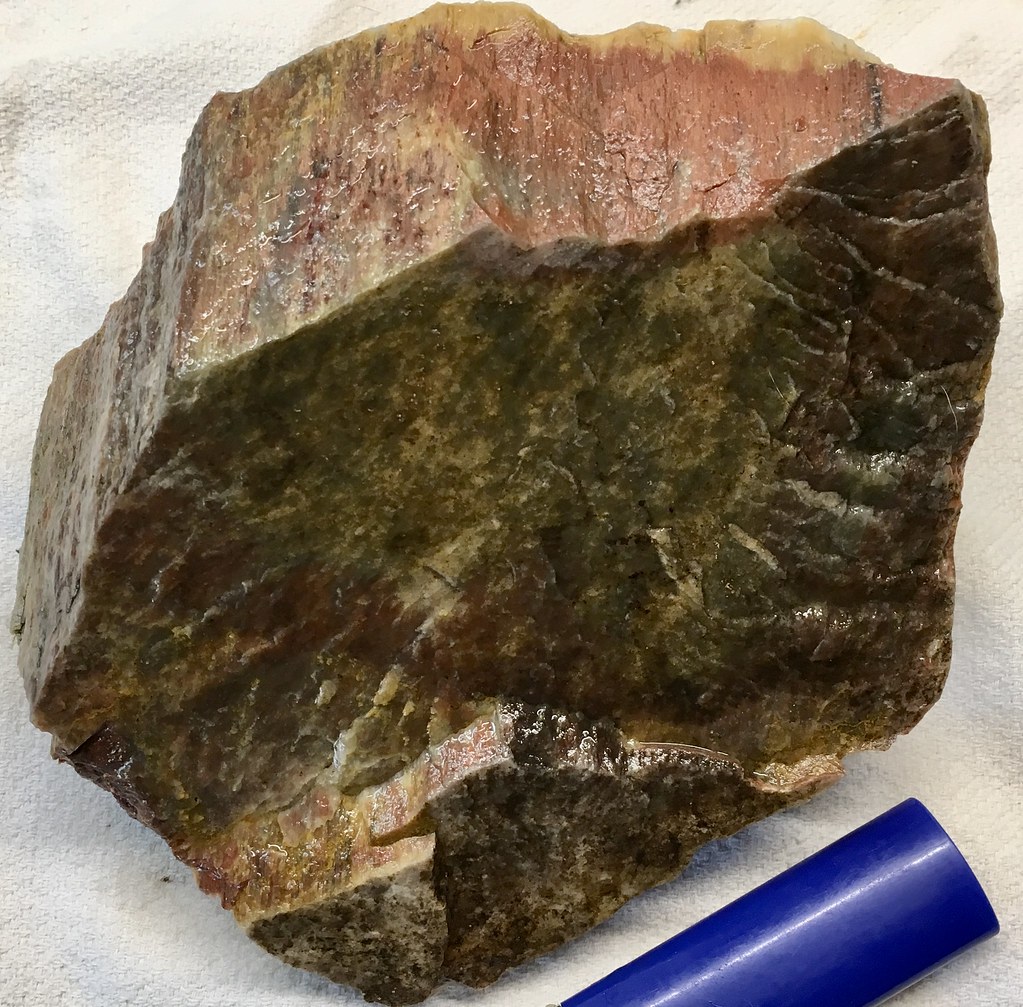 A chipped face parallel to the annual rings looking at the inside of the tree, wood grain preserved.  This chip is as if quarter sawn, perpendicular to center of tree. 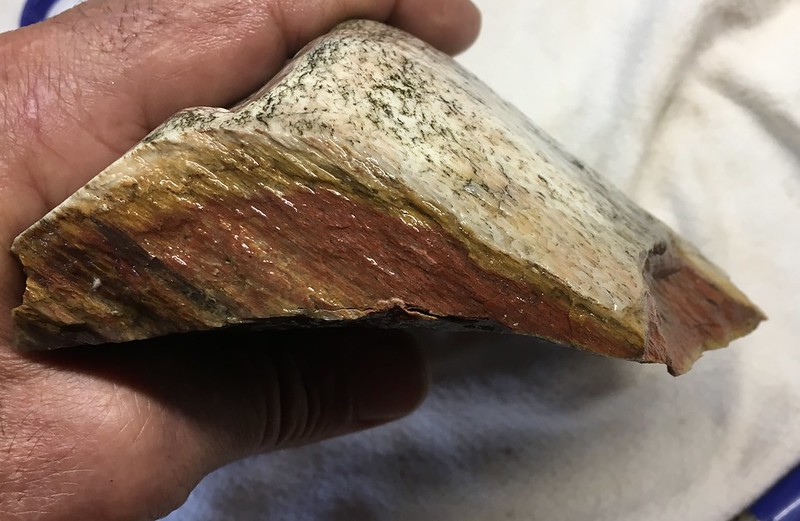 This chip is looking from the outside of the tree and is parallel to the annual growth rings.  This chip is also looking from the outside of the tree but is crossing the annual growth rings at a 30 degree angle. 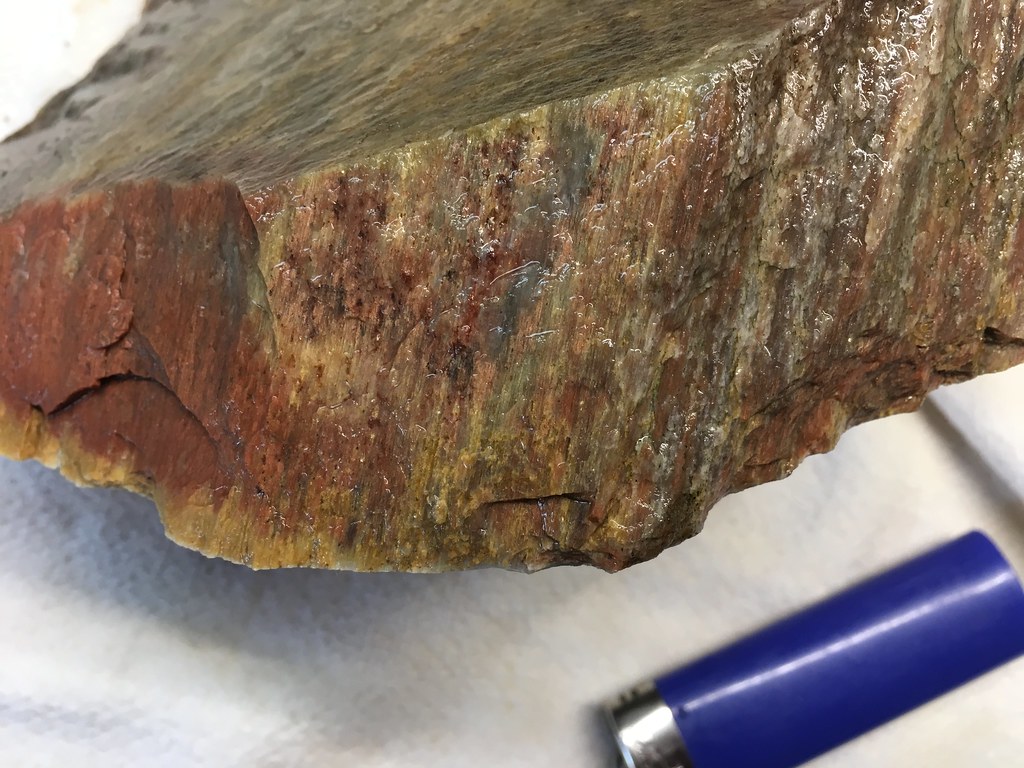 This is an older weathered radial sawn(broken) chip. Fresh chips at bottom of photo.  |
|
jamesp
Cave Dweller 
Member since October 2012
Posts: 36,471
|
Post by jamesp on May 12, 2022 11:08:42 GMT -5
Just saying, this wood is complicated.
|
|
jamesp
Cave Dweller 
Member since October 2012
Posts: 36,471
|
Post by jamesp on May 12, 2022 11:28:52 GMT -5
Ok this happens a lot. Why is a dang quartzite(?) vein running thru this pet wood tumble next to wood grain ! It even has mica flecks in it just like the native grey quartzite in this area. This is weird. It is common to find large log quarter sections with a wood grain layer say 1 inch thick surrounding the entire chunk chunk of wood with growth rings on the outer skin with what looks like a large grey solid quartzite center.  |
|
rockpickerforever
Cave Dweller  RIP Jean Bradley, you are forever loved
RIP Jean Bradley, you are forever loved
Member since July 2011
Posts: 12,069 
|
Post by rockpickerforever on May 12, 2022 12:07:41 GMT -5
Ok this happens a lot. Why is a dang quartzite(?) vein running thru this pet wood tumble next to wood grain ! It even has mica flecks in it just like the native grey quartzite in this area. This is weird. It is common to find large log quarter sections with a wood grain layer say 1 inch thick surrounding the entire chunk chunk of wood with growth rings on the outer skin with what looks like a large grey solid quartzite center.  Mixed marraige? All kinds of things like that happen, and we can only wonder why. |
|
|
|
Post by RickB on May 12, 2022 12:39:52 GMT -5
Ok this happens a lot. Why is a dang quartzite(?) vein running thru this pet wood tumble next to wood grain ! It even has mica flecks in it just like the native grey quartzite in this area. This is weird. It is common to find large log quarter sections with a wood grain layer say 1 inch thick surrounding the entire chunk chunk of wood with growth rings on the outer skin with what looks like a large grey solid quartzite center.  Hole in the wood that filled with sand? |
|
jamesp
Cave Dweller 
Member since October 2012
Posts: 36,471
|
Post by jamesp on May 12, 2022 13:22:54 GMT -5
Ok this happens a lot. Why is a dang quartzite(?) vein running thru this pet wood tumble next to wood grain ! It even has mica flecks in it just like the native grey quartzite in this area. This is weird. It is common to find large log quarter sections with a wood grain layer say 1 inch thick surrounding the entire chunk chunk of wood with growth rings on the outer skin with what looks like a large grey solid quartzite center.  Mixed marraige? All kinds of things like that happen, and we can only wonder why. Why didn't I have a vein from John Holmes passing thru my mid-section ? Ho ho. Mysteries abound ! |
|
jamesp
Cave Dweller 
Member since October 2012
Posts: 36,471
|
Post by jamesp on May 12, 2022 13:28:50 GMT -5
Ok this happens a lot. Why is a dang quartzite(?) vein running thru this pet wood tumble next to wood grain ! It even has mica flecks in it just like the native grey quartzite in this area. This is weird. It is common to find large log quarter sections with a wood grain layer say 1 inch thick surrounding the entire chunk chunk of wood with growth rings on the outer skin with what looks like a large grey solid quartzite center.  Hole in the wood that filled with sand? That is the only idea that makes sense. The quartzite is real high quality here and about the only other rock found here. Maybe the wood got compressed and heated with the sand that made the quartzite ? The heat would seem to be a problem in that scenario unless it binded together with silica like Tallahatta... And this 'quartzite' is just as tough and hard as Tallahatta. |
|
jamesp
Cave Dweller 
Member since October 2012
Posts: 36,471
|
Post by jamesp on May 12, 2022 13:32:30 GMT -5
I have some photos of larger tumbles coming out of the tumbler. Guess what, when wetted some of the mahogany color wood reflects light as if iridescent. It seems to be dependent on the cut/curve direction. hummingbirdstones |
|
lparsons
Cave Dweller 
Member since April 2020
Posts: 276 
|
Post by lparsons on May 12, 2022 14:17:12 GMT -5
Lol, that's funny lparsons. I did make a living collecting wetland plant seeds, cuttings and seedlings for planting in my wetland mitigation plant business over a 30 year period in the SE US, South and Central America. Believe me, the habitats were beautiful but less than comforting. Most time spent in central Florida which was probably the most worrisome due to the heavy snake and bee nest populations. Not to mention introduced some introduced and obnoxious snake species Florida snake collectors let loose. Fossils are not often thought to be found in such locations but geologic exposures do exist in such places. Often the rocks and fossils are under shallow water in these locations and are well hidden. South Alabama is a walk in the park compared to those habitats. But forbidding enough to possibly keep rock hounds away ! , Well the bees and snakes are very effective (99.9%) deterrent, not to mention the bird sized mosquitoes that probably live in there. 🤣 Obviously, only the most determined rockhounds, (and that of course would be you) are willing to risk life and limb!🤣🤣🤣 |
|
Sabre52
Cave Dweller  Me and my gal, Rosie
Me and my gal, Rosie
Member since August 2005
Posts: 20,476
|
Post by Sabre52 on May 12, 2022 18:21:37 GMT -5
Wow James, that chert makes our old earth toned Pedernales chert look positively plain. Gorgeous material! I suspect that even though it looks a little sparkly on the exterior, your chert will polish very well. Re your other comment, please do not send me more rocks *L*. I'm still tripping over boxes in my barn and am trying to get rid of my remaining collection, not build it up. I'm sure your first-hand knowledge of your local materials way eclipses my own anyway. I agree much of the Rio Grande wood originates in volcanic ash areas further west or south of the river. George West wood I believe, is much younger than our localized calcite wood, which is lower Cretaceous, which again befuddles me as if it has had three- or four-times longer exposure to overlaying beds of marine fossils why has not it been replaced by silica to a larger degree. I suspect chemistry is involved, and the reason I did not go to vet school, aside from being poor, is I totally sucked at all forms of chemistry. *L*. Beats me.
|
|
|
|
Post by hummingbirdstones on May 12, 2022 21:09:37 GMT -5
Mixed marraige? All kinds of things like that happen, and we can only wonder why. Why didn't I have a vein from John Holmes passing thru my mid-section ? Ho ho. Mysteries abound ! 'Tis a puzzlement ...  |
|
|
|
Post by hummingbirdstones on May 12, 2022 21:11:29 GMT -5
I have some photos of larger tumbles coming out of the tumbler. Guess what, when wetted some of the mahogany color wood reflects light as if iridescent. It seems to be dependent on the cut/curve direction. hummingbirdstones Pictures! I need pictures and/or video!  |
|


































 You're down here in the bilges with the wharf rats. You will get more mileage above on the upper decks.
You're down here in the bilges with the wharf rats. You will get more mileage above on the upper decks.

